We explain what the Indian Ocean is, the flora and fauna it presents and what its climate is like. Also, what are its characteristics and importance.
What is the Indian Ocean?
The Indian Ocean is the third largest volume of water in the world , after the Pacific and Atlantic Oceans . Its surface is approximately 20% of the earth's surface and reaches more than 68 million km2. Its volume is more than 290 million km3 and it is 20% of the total water of the planet .It ranges from southern Africa to western Australia. It borders Asia to the north, Africa to the west , Australia to the east, and the Southern Ocean to the south.
Due to its warm waters and exuberant coastal flora, it is a privileged destination for world tourism . In addition, it has historically been the obligatory step for contact between East and West .
flora of the indian ocean
The flora of the Indian Ocean includes not only underwater plants but also those that grow on its shores. Among them stands out the lemon citrus , which is the tree that produces the lemon.Among its aquatic plants , the hydrilla verticillata stands out , with pale green leaves, and the water lilac, which is found in shallow areas. The rill (also called loosestrife) is found in the water near the shore, with reddish and purple flowers.
indian ocean fauna
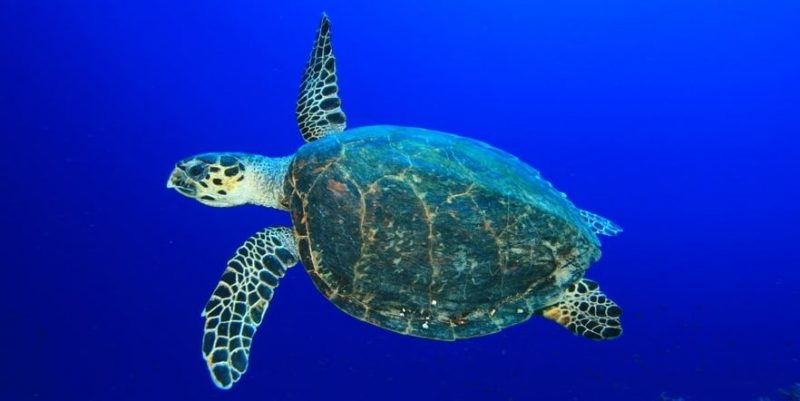 The Indian Ocean is home to a wide variety of fauna including the leatherback sea turtle, the world's largest reptile which is also the only sea turtle without a hard shell.
The Indian Ocean is home to a wide variety of fauna including the leatherback sea turtle, the world's largest reptile which is also the only sea turtle without a hard shell.Among its fauna there are some species that do not exist anywhere else in the world , such as the Chagos clownfish, which is characterized by its brown color, and the marine cowry nymph, a mollusk that lives in the regions near the Chagos Islands. .
indian ocean climate
The sector of the Indian Ocean north of the Equator is affected by monsoon winds. From October to April the intense winds blow from the northwest and from May to October they come from the south and west.In the southern hemisphere the winds are lighter, with the exception of summer storms .
Indian Ocean Hydrology
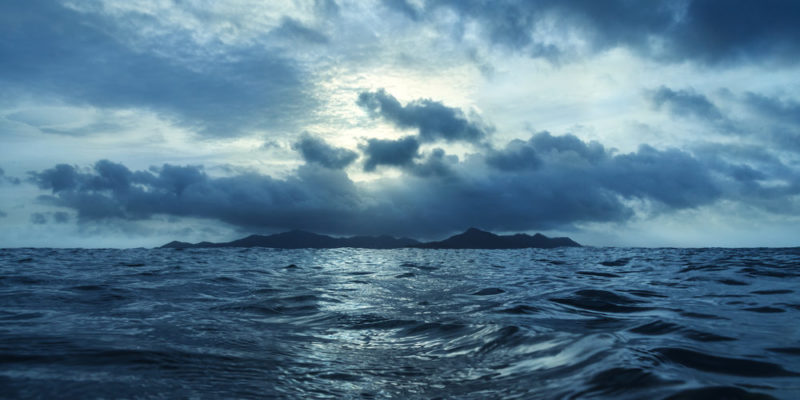 The monsoons have a decisive influence on the currents of this ocean . In the northern hemisphere, a clockwise movement is found as the dominant current . In contrast, in the southern hemisphere the currents are directed in the opposite direction.
The monsoons have a decisive influence on the currents of this ocean . In the northern hemisphere, a clockwise movement is found as the dominant current . In contrast, in the southern hemisphere the currents are directed in the opposite direction.The major rivers that flow into the Indian Ocean are the Zambezi, Shatt-al-Arab, Indus, Ganges, Brahmaputra, and Irrawaddy.
indian ocean economy
The main economic function of the Indian Ocean is the transport of goods between Asia , Africa and Oceania . Since the fifteenth century there have been disputes over the free passage of this territory , especially in times of colonization between the seventeenth and eighteenth centuries. Currently the naval passage is used mainly by India , Russia and the United States.However, at the local level, this ocean is a source of a subsistence resource for the inhabitants of its coasts , through fishing. Although there is no industrial fishing in the area, it is exploited by the small towns that surround it.
indian ocean tourism
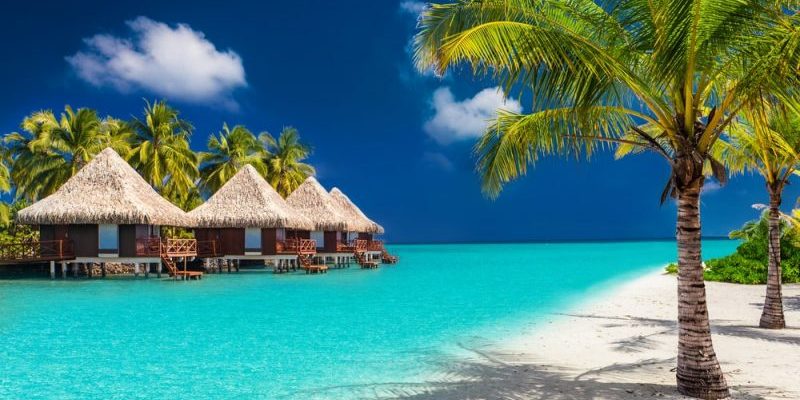 In the Indian Ocean there are a large number of paradisiacal islands that are used for tourism thanks to their white sand beaches and the warm and transparent water that surrounds them.
In the Indian Ocean there are a large number of paradisiacal islands that are used for tourism thanks to their white sand beaches and the warm and transparent water that surrounds them.Among the famous islands as tourist destinations are the Maldives and the Seychelles , chosen for diving. Madagascar, the largest island in the world, is also located in this ocean.
Given the large number of nearby tourist attractions, it is usually a regular route for luxury cruise ships .
indian ocean geology
The seafloor of the Indian Ocean is formed by the convergence of the African , Indo-Australian, and Antarctic tectonic plates . The union between them forms an inverted Y.The average depth of this ocean is 3,700 m, but its deepest point is 7,258 m , and is called the Java Trench.
On its floor are submarine cliffs and ridges , including a 2,000-kilometer-long submarine plateau .
2004 earthquake
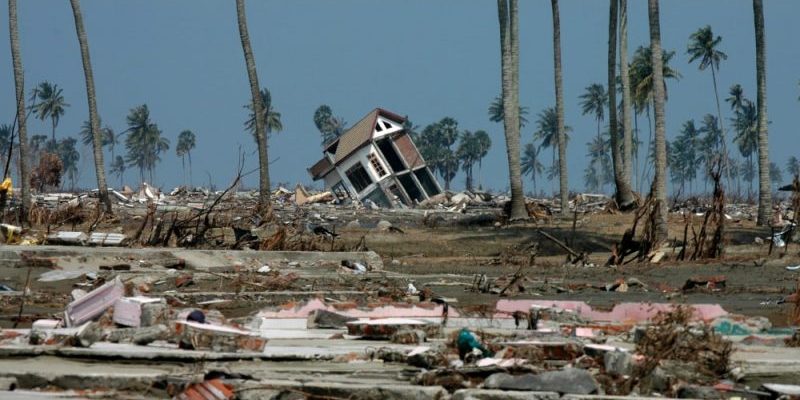 On December 26, 2004 , a magnitude 9.1 submarine earthquake originated in the Indian Ocean , north of the Simeulue Islands. Its recorded length was between 8.3 and 10 minutes, the third longest in history .
On December 26, 2004 , a magnitude 9.1 submarine earthquake originated in the Indian Ocean , north of the Simeulue Islands. Its recorded length was between 8.3 and 10 minutes, the third longest in history .Its impact was so great that it caused a series of tsunamis that affected Indonesia, Malaysia, Sri Lanka, India and Thailand, causing more than 275 thousand deaths.
Historical importance of the Indian Ocean
The earliest civilizations developed on the shores of the Indian Ocean , in Mesopotamia , Egypt, and the Indian subcontinent.For this reason, and thanks to the tranquility of its waters, since the invention of navigation (in the third millennium before Christ ) this ocean has been explored in areas close to the coast and it was one of the first maritime spaces (along with the Mediterranean ) to be used for trade .
Physical aspects of the Indian Ocean
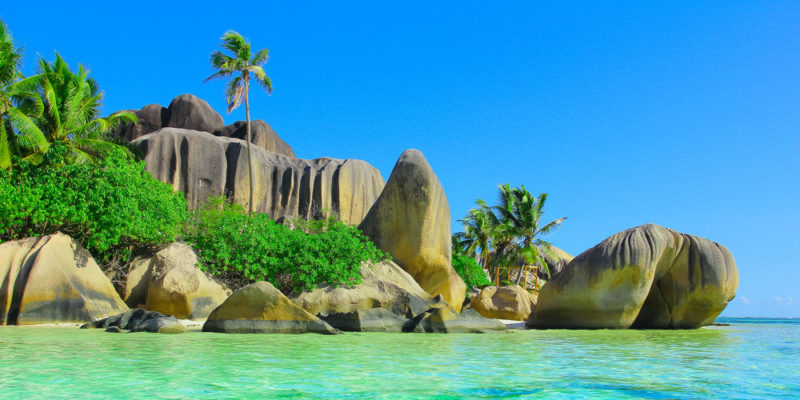 The waters of this ocean have a salinity between 3.2 and 3.7% , with the highest points of salinity in the Arabian Sea.
The waters of this ocean have a salinity between 3.2 and 3.7% , with the highest points of salinity in the Arabian Sea.Its average surface temperature is 22 degrees, but it can exceed 28 degrees , due to its location near the equator.
The above content published at Collaborative Research Group is for informational and educational purposes only and has been developed by referring reliable sources and recommendations from technology experts. We do not have any contact with official entities nor do we intend to replace the information that they emit.
Passionate about understanding and contributing to a world that does not stop changing. New forms of Work, Sustainability and Technology. For many years he has worked as a creative for large international companies. He has a Ph.D. in information technology and he has been doing quantitative research in the interdisciplinary areas of information systems, cyber security, data analytics and artificial intelligence. He continue to look for creative solutions through technology to help companies to be more humane and sustainable..
Leave a reply
Your email address will not be published. Required fields are marked *Recent post

Sport: What Is It, Types, Risks, Features, Characteristics and Examples

Dogs: Emergence, Features, Characteristics, Feeding and Breeds

Story: Definition, Elements, Structure, Features and Characteristics

